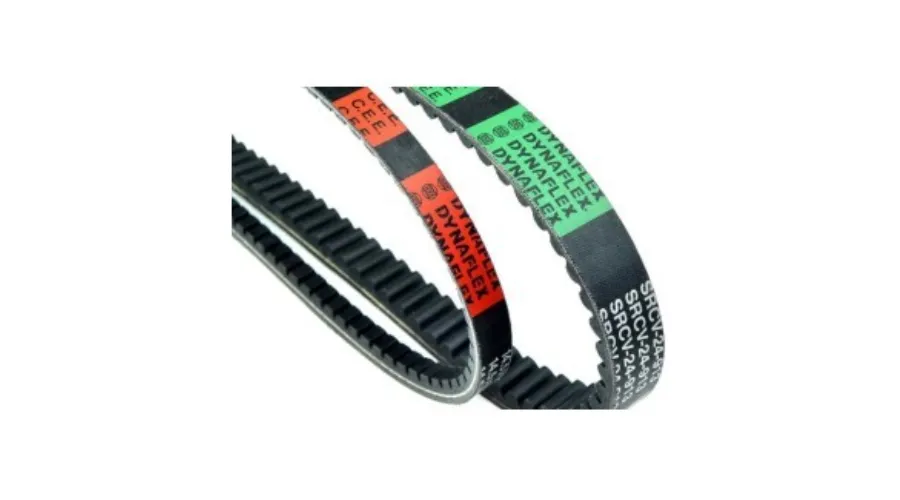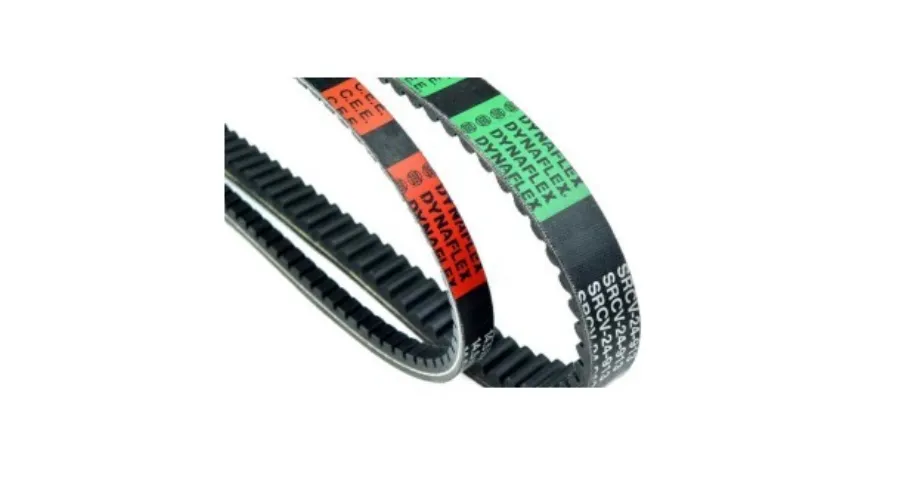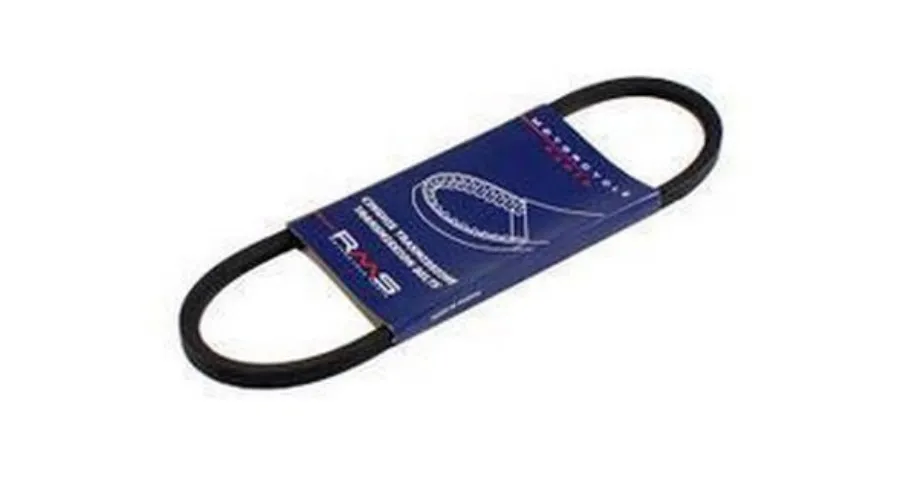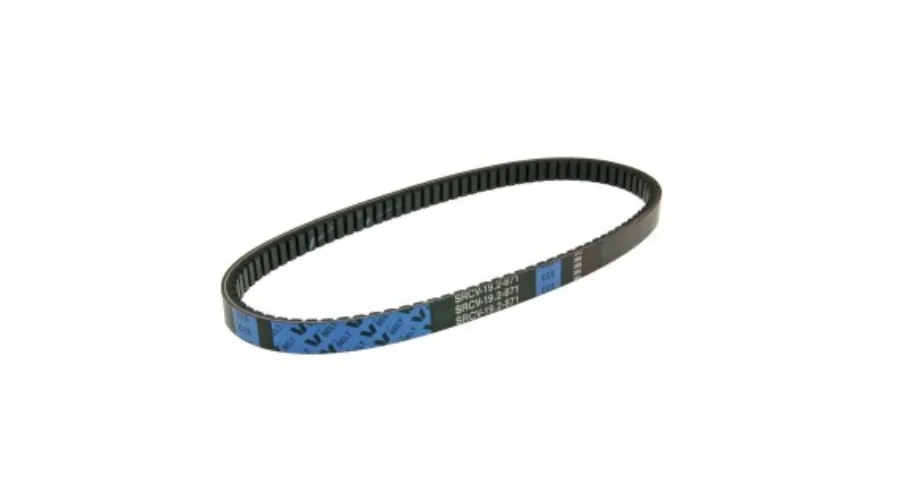Transmission belts are essential components in various mechanical systems, playing a pivotal role in transferring power between rotating shafts. Composed of durable materials such as rubber or synthetic polymers, these belts are designed to efficiently transmit motion and force from one pulley to another. Commonly used in industries, automobiles, and machinery, transmission belts come in different types, including V-belts and synchronous belts, each suited for specific applications. Their flexibility, strength, and resistance to wear make them reliable for transmitting power over long distances with minimal energy loss. Proper maintenance and tensioning are crucial for optimal performance, ensuring smooth and efficient power transmission in diverse mechanical setups.
AUTODOC
AUTODOC stands out in delivering top-notch transmission belts by prioritising quality, variety, and customer satisfaction. With a vast inventory of transmission belts, AUTODOC ensures access to high-quality products sourced from reputable manufacturers. The selection spans various types and specifications, catering to diverse automotive needs. AUTODOC’s commitment to customer satisfaction is evident through its user-friendly platform, detailed product information, and competitive pricing. Whether customers seek durability, specific dimensions, or compatibility with various vehicles, AUTODOC’s comprehensive range and emphasis on quality assurance make it a reliable choice for those in search of the best transmission belts for their automotive needs.
Benefits and Roles of Transmission Belts
- Power Transfer Simplified: Transmission belt play a key role in moving power from one spinning part to another, helping machines do work effectively.
- Different Types for Different Jobs: There are various kinds of transmission belts like V-belts and synchronous belts, each good for specific tasks. This flexibility makes them fit for many types of machines.
- Saving Energy: Transmission belts are made to reduce slipping, making power transfer more efficient. This helps save energy, as less power is wasted during the process.
- Affordable Solution: Using transmission belt is often cheaper for moving power compared to other ways. They don’t cost much to make, install, or maintain, making them a budget-friendly choice in many industries.
- Little Upkeep Needed: With proper care, transmission belt don’t need much attention. This lowers downtime, cuts maintenance costs, and makes the whole system more reliable.
- Strong Materials: Transmission belts are usually crafted from tough materials like rubber or synthetic polymers. These materials resist wear, making the belts last longer.
- Quiet and Peaceful: Unlike some methods, transmission belts run quietly. This is great for places where reducing noise matters, like in offices or home appliances.
- Easy to Adjust: You can easily adjust the tension of transmission belts for better performance. Getting the tension right ensures smooth power transfer and makes the belts and parts last longer.
- Handling Big Power: Transmission belts can deal with a lot of power, making them perfect for heavy-duty jobs in industries. They can transmit a ton of power without needing to be huge and heavy.
- Simple Setup: Installing transmission belt is usually simple, and you can use them with different pulley setups. This simplicity cuts labour costs and makes setting things up easier.
- Eco-Friendly Choices: Some transmission belts are made with materials and processes that are good for the environment. This fits well with modern industries aiming to be more sustainable.
Also Read: Road Trip Savior: Car Seat Organizer For On-The-Go Order
Best Transmission Belts by AUTODOC
1. VICMA Transmission belt, variator

VICMA Transmission belt, variator | Neonpolice
The VICMA Transmission Belt Variator, which is 750 mm long and 16.5 mm wide, is a dependable part designed to transfer power effectively. It’s specifically for variator use and comes at a price of 11.34 €, offering a budget-friendly solution for systems that need smooth and reliable power transfer. The belt’s specifications make it versatile for different setups, making it a crucial component for applications where reliable power transmission is essential.
2. VICMA Transmission belt, variator

VICMA Transmission belt, variators | Neonpolice
The VICMA Transmission Belt Variator, measuring 810 mm in length and 19 mm in width, is a specialised component designed for efficient power transmission. Tailored for variator applications, this transmission belt is priced at 16.75 €, offering a cost-effective solution for systems requiring reliable and smooth power transfer. With its specifications of 810 mm length and 19 mm width, the belt is versatile and adaptable to various mechanical setups.
3. RMS Timing toothed belt

RMS Timing toothed belt | Neonpolice
The RMS Timing Toothed Belt is 13 mm wide and 1141 mm long, made for variomatic drives, providing accurate power transmission. It works like a toothed timing belt, ensuring precise timing in systems. You can get it for a reasonable price of 10.22 €, making it a budget-friendly choice for applications that need reliable and accurate timing.
4. VICMA Timing toothed belt
The VICMA Timing Toothed Belt, designed for variomatic drives, has a length of 860 mm and a width of 19.7 mm. Serving as a toothed timing belt, it ensures precise and reliable power transmission in variomatic systems. Priced at 19.92 €, this belt offers a cost-effective solution for applications that require accurate timing. With specifications tailored for variomatic drives and a focus on precision, the VICMA Timing Toothed Belt stands as an affordable and dependable choice for systems where precise timing is crucial.
Conclusion
In simple terms, transmission belts are like the unsung heroes in the world of machines, making sure everything runs smoothly. AUTODOC, a place where you can get car parts, tells us that these belts are crucial for vehicles and machines to work well. They come in different types, made from materials like strong rubber and fabric, ensuring they last a long time. AUTODOC makes sure you have access to top-notch belts that are efficient, need less fixing, and are affordable. So, whether you’re into cars or work with machines, AUTODOC helps you understand and get the right transmission belts to keep things running smoothly. For more information on transmission belts, visit NeonPolice.
